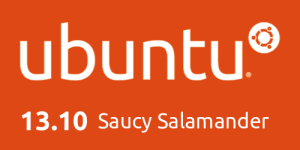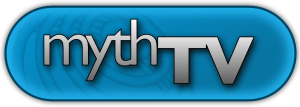
In this part I'll explain my thoughts on how Linux could get more of a main stream acceptance.
For Linux to get more of a main stream acceptance than it already has got Software Developers need to fill the gaps by making ether Linux equivalents to the big and more specialized Software suites that are on Windows, make there versions operate in as close to the same way as well as make them look as close as they can to the big Window's software suites without getting sued for copy right infringement or the Big Window's software manufacturers should bring out a Linux version of their software. Microsoft & Adobe already make Mac OSX versions of their software, they could easily make money out of people that need Microsoft Office or Adobe Creative Cloud at work or School/Collage/University and don't have a Windows or Mac Computer at home, as well as from people that don't like Windows but would like to keep all the Software that they have purchased on Windows.
There are ways to get Microsoft Office (Pre Office 2013/Office 365) along with other Windows only software using Crossover Office (Paid) Play on Linux (Free but mainly meant for Games) and the Free but not as user friendly way to get Windows Software to run on Linux Wine, but Native versions would certainly boost Linux's popularity.
The other way to use Windows only Software is to use something like VMWare or VirtualBox and installing a Licensed copy of Windows just for the Windows only software, but this method will severely impact the performance of the host Linux computer as well as have a negative impact on the Vitalized Windows Computer unless you have a new powerful Computer, but that then defeats one of the big draws of Linux, that it can run on ageing Computers that can't handle the newer versions of Windows that well.
With both independent Game Developers and even Valve getting behind Linux with the introduction of Halflife 2, its addons, Counter Strike, Portal & even Steam all being made available for Linux & Windows Natively by Valve and even independant Developers making both Linux & Windows native versions of their games it really makes sense that the other Big Game Developers like Electronic Arts and even the Big software Developers to make Linux versions of their software available natively on Linux, but I can't see many doing that as they are ether stuck in the Windows only world with a few diversifying to Mac OSX & probably don't see the extra expense of having to employ Linux Developers to translate or even re-package their games or software to Linux as viable compared to the amount of extra revenue that they would make, thus alienating owners of their games or even software who would get the game for free on Linux since they already have the Windows version ( only applicable to Game Developers like Electronic Arts that have the Origin distribution platform, Developers that use the Steam Distribution platform, Adobe with the Creative Cloud platform & Microsoft with the Office 365 platform), even some independent game Developers that Distribute their games themselves as well as through Steam give their games away free to Linux users that purchase the Windows version as well as to Windows Users that purchase the Linux version.
Microsoft also don't help the growth of the big computer OEM's by giving them huge incentives to only install Windows on their computers if they left the big OEM's to pick and choose the OS they want to sell a computer with or even to allow them to sell computers OS free it would bring more people to try Linux by ether buying a computer with Linux Pre-Installed or even at a discount without anything installed, thus allowing people to even choose what OS to install without voiding their warranty. Currently there are only two OEM's that give an alternative to Windows, 1 is
System 76 who make Ubuntu only Desktop, Laptop & Server Computers with Ubuntu Pre-installed and the other is
Novatech who do mid range prices for a base configuration OS free computer, a more expensive fully customized OS free computer up to a very expensive fully customized computer with Windows and Office.
Novatech's Desktops are fully customizable and include the choice of no OS, Windows only or Windows & Office, & like Apple they also offer a cheaper version of their Desktop & Laptop computers in the form of a base configuration that you can also configure however you like & how bigger budget you've got, but unlike all the other OEM's including Apple they have the same options in OS free version which is a bonus for Linux users as they don't have to potentially void their Hardware warranty by replacing Windows with Linux or existing Windows users that have got their own Licensed copy of Windows & also own their own Licensed copy of Office or own their own Licensed copy of Windows and have one of the Office 2013 365 subscriptions or even for anyone who wants to buy their own Licensed copy of Windows to avoid the bloatware associated with buying a computer from one of the big OEM's.
Sure with some of these ideas Microsoft would see a loss of revenue from potentially less Windows sales, but that would be more than made up for by the increase in ether Office 2013+ or Office 365 Subscriptions. But I suppose that Microsoft has it's reasons for being anti- Linux, but that makes no sense when they release Office for both Windows, Mac OSX, iOS & Android along with its own Windows Phone & Windows 8 RT Platforms. Their long standing argument that Linux is complicated & expensive compared to Windows is harking back to the early days of Linux but with UI's that are more visually appealing and simpler than Windows 8 this is no longer true, also with Broadband Internet being the only option for many people now compared to when Linux first came to light it's so much cheaper than Windows as it just needs the price of a Blank DVD and time to backup files on a Windows computer, reboot the computer with the Linux DVD in the DVD, install and be running Linux in a matter of minutes compared to the close to 30mins to over an hour to Instalolandl Windows 8.1 (Depending if you are coming from a Windows 8 Upgrade DVD, Windows 8 DVD or Windows 8.1 DVD) and having to install Hardware Drivers.
Roland
Next Previous 
 In this part I'll conclude the Video Editing and Scree Capture series with Web Cam Video Capture, and talk about two Web Cam tools I've got installed, Cheese Webcam Booth & GTK UVC video viewer.
In this part I'll conclude the Video Editing and Scree Capture series with Web Cam Video Capture, and talk about two Web Cam tools I've got installed, Cheese Webcam Booth & GTK UVC video viewer.

